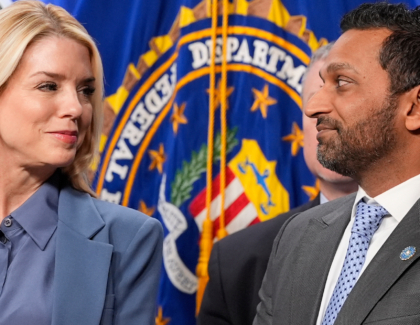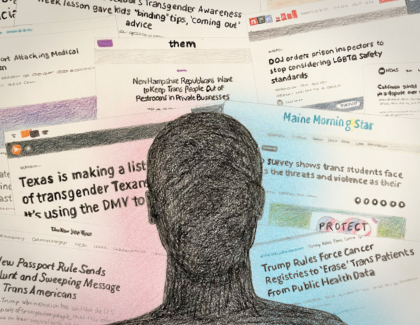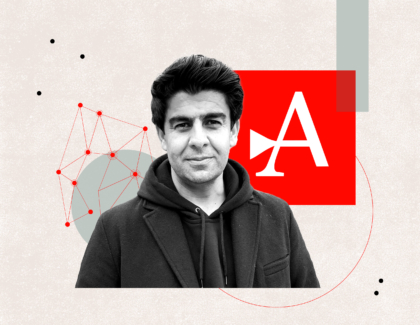Sign up for the daily CJR newsletter.
Are you a female journalist who has been subject to online harassment and abuse? If so, this one’s for you. An organization dedicated to combating online harassment is seeking 100 women writers and journalists to participate in a social media monitoring program called the Pilot 100. The initiative follows on from a year-long study by the organization TrollBusters, which was founded by Michelle Ferrier, an associate professor at Ohio University’s E.W. Scripps School of Journalism.
TrollBusters–whose tagline is “Online pest control for women writers”–has spent the past year studying instances of harassment reported by journalists through its website. The group also is developing tools to monitor harassment in real-time and providing assistance to targets of online abuse. The goal of the Pilot 100 program, which will monitor the social media accounts of participants for six months, is to analyze and visualize how networks of harassers operate and figure out how to combat them.
It’s a relevant issue. Just ask Daily Beast reporter Olivia Nuzzi, who last week was the target of rape threats on Facebook from a South Jersey GOP candidate who had been harassing her for more than a year. “Most reporters, especially female reporters, deal with harassment from grammatically challenged internet trolls,” Nuzzi wrote in statement to Politico after the incident.
This man who wants me to be raped today was a Republican candidate for office in NJ https://t.co/NgxtjOTaJ9 pic.twitter.com/H31Q5VmXVc
— Olivia Nuzzi (@Olivianuzzi) September 5, 2016
Social platforms are beginning to take the problem more seriously. As part of efforts to deal with harassment, Twitter introduced a set of tools on August 18 that enable users to block harassers. On September 12, Instagram announced the rollout of similar tools that will help filter out harassing messages in comments. Ferrier, who is familiar with the enormous scope and scale of the problem, has some sympathy for social platforms trying to deal with hate speech and abuse. “They’re overwhelmed,” she says.
Twitter CEO Jack Dorsey told Fast Company in an interview published Tuesday that safety is now a top priority for the organization, which has been dogged by stories about how it allows harassment to proliferate. Dorsey acknowledged Twitter’s past failings and explained how the new tools would allow users effectively turn harassing Tweets on and off.
It’s a good start, but Ferrier is skeptical algorithms will be able to solve the problem entirely. “People find ways to write around the language, to subvert our best algorithms and key words searches, to morph language and visualize it… and [they] use emojis and other things to be able to disguise what they’re doing,” she says.
Ferrier also points out that permanently blocking or deleting harassment isn’t always the best approach. “It’s important to continue to allow that activity to be seen because law enforcement, for the most part, won’t operate unless it’s active,” she says. “If you’ve blocked that person and you’re no longer seeing it, you’ve eliminated the opportunity to be able to act down the road in some kind of legal capacity because you don’t have the evidence.”
Since she first began teaching about this 10 years ago, Ferrier says she has almost done a 180. She used to be gung ho about encouraging students to go online and create their digital identities. Now she cautions students to think about whether they want to use their real name or choose a pseudonym at the start of their career, before it’s too late to make the change. “It’s a real question,” she says.
Rather than chasing down trolls, the Pilot 100 program aims to understand targets’ needs and respond in real-time. Ferrier emphasizes the importance of social media as a primary tool of communication for journalists to connect with audiences and believes “that digital identity means something and has value to it.” Online abuse is not something we should expect women to have to ignore or avoid by staying off social media, she says. That’s why TrollBusters is focused on supporting the target of harassment and “keeping them online, whatever that takes.”
The resources available on TrollBusters will be available to everyone, whether or not they’re part of the monitoring program. Ferrier hopes people will make use of them. “We’re learning a lot more about how best to coach our targets. We’re also really helping to inform a larger international conversation that’s happening now around this issue and looking at policies and what kind of training of law enforcement [and] new legislation might be necessary to deal with [it].”
Half the spots in Pilot 100 are filled, but TrollBusters is seeking more women journalists, women journalists of color, and others who may be targeted for online harassment because of their roles in media.
Has America ever needed a media defender more than now? Help us by joining CJR today.







